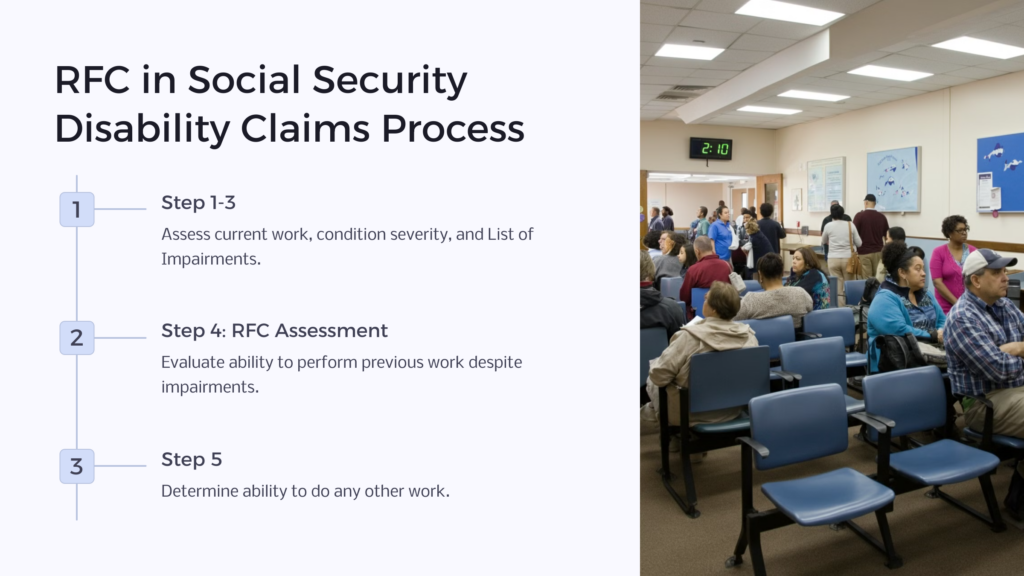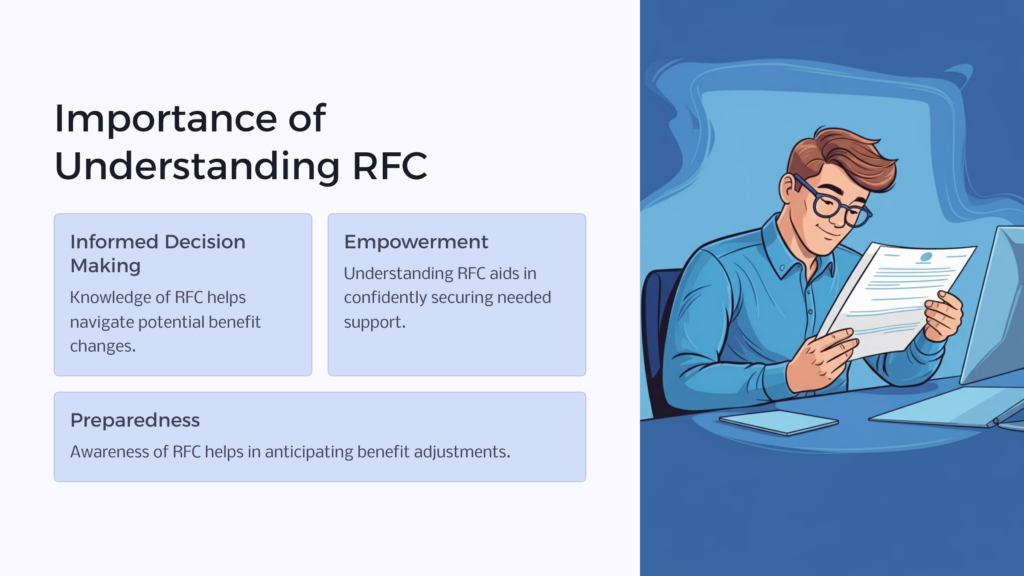The concept of Social Security represents a vital lifeline for countless Americans. Established under the Social Security Act of 1935, this federal insurance program offers support to elderly individuals, those who have disabilities, and surviving family members of deceased workers. A crucial and often misunderstood aspect of this framework involves the idea of residual functionality in Social Security terms. This article will delve into this concept, explaining what it means, its significance, and how it impacts the review and awarding of Social Security disability benefits.
Defining Key Terms
To understand the context of residual functionality in Social Security, it’s essential to define two key terms: ‘residual functional capacity’ and ‘functional capacity’. The former, abbreviated as RFC, refers to the maximum amount of work-related activity an individual can perform despite their physical or mental limitations. In contrast, ‘functional capacity’, generally relates to a person’s ability to carry out fundamental tasks, regardless of their health status.
Within the Social Security system, these terms play crucial roles. The determination of an individual’s RFC, in particular, can significantly influence whether or not they are eligible to receive disability benefits.
Analyzing the Concept of Residual Functional Capacity (RFC)

The RFC quantifies an individual’s capacity to perform work-related activities, even considering their limitations due to physical illness or mental disorders. It plays a critical role in determining eligibility for disability benefits.
Two types of RFC are assessed—physical and mental. Physical RFC refers to the person’s physical ability to perform various job tasks such as sitting, standing, walking, lifting, pushing, pulling, or carrying. Conversely, a mental RFC assesses a person’s mental or emotional ability to do tasks like follow instructions or make decisions.
The RFC evaluation process involves a thorough review of an applicant’s medical records and possibly a physical or psychological examination. Important factors considered include the individual’s medical condition, symptoms, medical treatment, and their physical and mental capacities.
Role of Residual Functional Capacity in the Social Security Disability Claims Process

The Social Security Administration (SSA) uses a five-step sequential evaluation process to determine eligibility for disability benefits. The steps involve understanding the claimant’s current work activity, the severity of the claimant’s condition, whether the condition is found in the List of Impairments, the capacity to perform previous work, and the ability to do any other work.
The fourth step in this process tackles the RFC assessment. It considers the claimant’s ability to do their previous work despite their impairment(s). By analysing the RFC, SSA can determine if the claimant, considering their condition, can still perform tasks they previously carried out without prohibitive limitations.
The determination of RFC ultimately influences the final decision made on disability claims. If a person’s RFC is determined to be significantly limited, they may be granted disability benefits by disability determination services, whereas someone with a higher RFC may have their claim denied. Your claim may be appealed if denied, and you may want to consider the help of a disability lawyer strengthening your case.
Impact of Residual Functional Capacity (RFC)

The importance of RFC within the realm of SSDI benefits cannot be overstated. It acts as a yardstick that measures how much work a disabled individual can still do, thus influencing the degree and type of benefits they are granted.
Moreover, the RFC assessment’s output can change over time. If a person’s condition improves or deteriorates, it can lead to a revision in their established RFC. Such changes can directly impact the benefits they receive, creating potential for increased support in cases of declining health, or diminishment in cases of improvement.
Common Misconceptions and Misunderstandings Surrounding RFC in Social Security

There are common misconceptions surrounding the determination of and the role RFC plays in the Social Security system. For instance, some people believe that RFC solely relies on medical reports. However, the reality is that it takes into account an individual’s everyday activities and testimony from relatives or colleagues on top of medical evidence.
Moreover, another widespread misunderstanding is that RFC assessments are one-off procedures. In reality, these assessments can be repeated if there are significant changes in a person’s condition.
To recap, the concept of residual functionality in Social Security terms refers to the determination of an individual’s Residual Functional Capacity, or RFC. This assessment considers physical limitations as well as mental limitations and profoundly affects the consideration and awarding of disability benefits.
The importance of understanding how RFC is determined and used in the disability claims process cannot be underestimated. For individuals who are considering applying for or already receiving Social Security disability benefits, staying abreast of RFC developments is highly advisable. This understanding will arm beneficiaries with vital knowledge to navigate potential changes to their benefit awards, helping them to secure the support they need in a confidently informed manner.
Whether you’ve just begun your journey with Social Security disability benefits, or you’re revisiting your understanding of complicated key terms such as RFC, this knowledge can empower you to proceed with added confidence and insight. As always, seeking professional advice or assistance in understanding the nuances of these terms and processes is a wise step in any individual’s journey with Social Security.
Check us out at Benefits.com and take our quiz so we can get started helping you on your path to receiving benefits.
 Benefits.com Advisors
Benefits.com Advisors
With expertise spanning local, state, and federal benefit programs, our team is dedicated to guiding individuals towards the perfect program tailored to their unique circumstances.
Rise to the top with Peak Benefits!
Join our Peak Benefits Newsletter for the latest news, resources, and offers on all things government benefits.




















